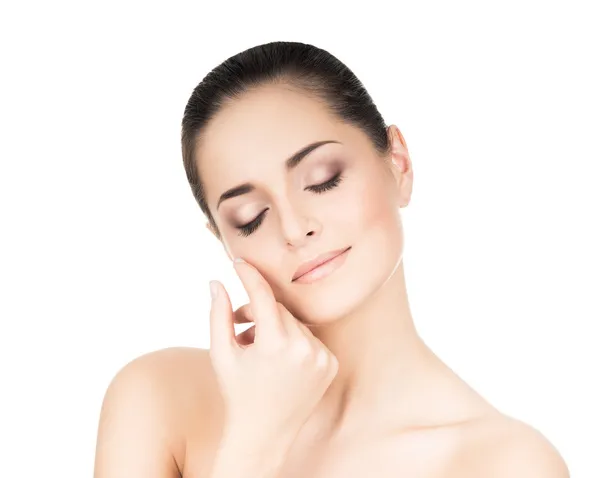The Correct Way to Apply Moisturizing Products for Maximum Benefits
Moisturizing products play a pivotal role in skincare routines, helping to hydrate, nourish, and protect the skin. However, to reap the maximum benefits from these products, it’s essential to apply them correctly. In this comprehensive guide, we’ll explore the proper techniques for applying moisturizing products to ensure optimal results and promote healthy, radiant skin.
Understand Your Skin Type:
Understanding your skin type is the foundational step in building an effective skincare routine. Each skin type has unique characteristics and requires specific care to maintain its health and vitality. Here’s why understanding your skin type is crucial before selecting and applying moisturizing products:
Dry Skin: Dry skin lacks moisture and often feels tight, rough, or flaky. It may be more prone to sensitivity and irritation. When choosing moisturizers, look for rich, emollient formulations that provide intense hydration and help restore the skin’s natural barrier function. Ingredients like hyaluronic acid, glycerin, and shea butter are beneficial for replenishing moisture and improving skin texture.
Oily Skin: Oily skin is characterized by excess sebum production, which can lead to a shiny or greasy appearance, enlarged pores, and acne breakouts. Lightweight, oil-free moisturizers or gel-based formulations are ideal for oily skin types as they provide hydration without clogging pores or exacerbating oiliness. Look for products labeled “non-comedogenic” to ensure they won’t contribute to breakouts.
Combination Skin: Combination skin exhibits characteristics of both dry and oily skin types, with some areas being oily (typically the T-zone) and others being dry or normal. Balancing hydration levels while addressing different areas of the face can be challenging. Opt for moisturizers that offer lightweight hydration and mattifying properties for oily zones, while still providing adequate moisture for drier areas. Look for products specifically formulated for combination skin to achieve optimal balance.
Sensitive Skin: Sensitive skin is prone to irritation, redness, and allergic reactions, often triggered by environmental factors, harsh ingredients, or fragrances. When selecting moisturizers for sensitive skin, opt for gentle, fragrance-free formulations that contain soothing ingredients like aloe vera, chamomile, or oat extract. Patch-test new products and introduce them gradually to minimize the risk of adverse reactions.
Start with Cleansed Skin: Beginning your skincare routine with freshly cleansed skin is a crucial step in maximizing the effectiveness of moisturizing products. Here’s why starting with cleansed skin is essential and how to do it effectively:
Remove Impurities: Throughout the day, dirt, oil, pollutants, and other impurities accumulate on the skin’s surface, potentially clogging pores and interfering with the absorption of skincare products. Cleansing your skin removes these impurities, allowing moisturizing products to penetrate deeply and deliver their active ingredients where they’re needed most.
Maintain Skin Health: Cleansing helps to maintain the overall health of your skin by preventing the buildup of bacteria, dead skin cells, and excess oil, which can lead to breakouts, dullness, and other skin concerns. By starting with a clean canvas, you create an optimal environment for moisturizing products to work effectively and promote skin health.
Enhance Absorption: Cleansing opens up the pores and removes surface debris, allowing moisturizing products to penetrate more deeply into the skin. This enhanced absorption ensures that the active ingredients in your moisturizer can reach the deeper layers of the skin, where they can provide maximum hydration and nourishment.
To start with cleansed skin, follow these steps:
Choose a Gentle Cleanser: Select a cleanser suitable for your skin type that effectively removes impurities without stripping away its natural oils. Look for a gentle, pH-balanced formula that won’t cause irritation or dryness.
Wet Your Face: Splash your face with lukewarm water to wet the skin and prepare it for cleansing. Avoid using water that is too hot, as it can strip the skin of its natural moisture and lead to dryness or irritation.
Apply the Cleanser: Dispense a small amount of cleanser into your hands and gently massage it onto your damp skin using circular motions. Focus on areas prone to oiliness, such as the forehead, nose, and chin (T-zone), as well as areas where makeup or sunscreen may be present.
Rinse Thoroughly: After cleansing, thoroughly rinse your face with lukewarm water to remove all traces of cleanser and impurities. Pat your skin dry with a soft towel, being careful not to rub or tug at the delicate skin.
By starting your skincare routine with freshly cleansed skin, you create the perfect foundation for moisturizing products to work their magic. Clean, prepped skin allows moisturizers to absorb more effectively, leading to improved hydration, nourishment, and overall skin health. Incorporate cleansing into your daily skincare routine to ensure that you get the most out of your moisturizing products and achieve radiant, glowing skin.
Apply to Damp Skin: Applying moisturizing products to damp skin is a highly effective technique that can significantly enhance their efficacy and provide optimal hydration for your skin. Here’s why applying moisturizers to damp skin is beneficial and how to do it properly:
Enhanced Absorption: Moisturizers are more readily absorbed into damp skin compared to dry skin. When the skin is damp, its outermost layer, known as the stratum corneum, becomes more permeable, allowing moisturizing ingredients to penetrate more deeply. This enhanced absorption ensures that the active ingredients in your moisturizer can reach the deeper layers of the skin, where they can provide maximum hydration and nourishment.
Lock in Moisture: Applying moisturizers to damp skin helps to lock in moisture more effectively. As the moisturizer is absorbed into the skin, it traps the water molecules on the surface, forming a protective barrier that prevents moisture loss throughout the day. This technique helps to keep the skin hydrated for longer periods, promoting a soft, supple, and radiant complexion.
Maintain Natural Moisture Balance: Hydrating the skin from within is essential for maintaining its natural moisture balance. By applying moisturizers to damp skin, you replenish lost moisture and help restore the skin’s hydration levels, preventing dryness, flakiness, and irritation. This technique ensures that the skin remains adequately hydrated, regardless of environmental factors or external stressors.
To apply moisturizers to damp skin effectively, follow these steps:
Cleanse Your Skin: Start by cleansing your skin with a gentle cleanser suitable for your skin type. Remove any dirt, oil, or impurities that may be present on the skin’s surface to create a clean canvas for better absorption of moisturizing products.
Pat Your Skin Dry: After cleansing, pat your skin dry with a soft towel, leaving it slightly damp. Avoid rubbing or toweling off vigorously, as this can remove too much moisture from the skin and disrupt its natural balance.
Apply Your Moisturizer: Dispense a small amount of moisturizer into your hands and gently massage it onto your damp skin using upward, circular motions. Focus on areas that tend to be drier, such as the cheeks, forehead, and neck, ensuring even coverage.
Allow Time to Absorb: Allow the moisturizer to absorb fully into the skin before proceeding with any additional skincare or makeup products. This gives the moisturizer ample time to penetrate deeply and provide optimal hydration.
Use the Right Amount: Using the right amount of moisturizing products is crucial for achieving optimal results without leaving your skin feeling greasy or weighed down. Here’s why it’s essential to use the correct amount and how to do it effectively:
Avoid Excess Residue: Applying too much moisturizer can leave behind a greasy or sticky residue on the skin’s surface, which can be uncomfortable and may interfere with the absorption of other skincare products or makeup. Using the right amount ensures that the moisturizer is absorbed effectively without leaving any excess residue.
Maximize Absorption: Using an excessive amount of moisturizer can overwhelm the skin and hinder its ability to absorb the product properly. By starting with a small amount and gradually increasing as needed, you allow the skin to absorb the moisturizer more efficiently, ensuring that it reaches the deeper layers where hydration is needed most.
Target Problem Areas: Different areas of the face may have varying moisture needs, so it’s essential to focus on areas that tend to be drier or more prone to dehydration. Common areas for dryness include the cheeks, forehead, and neck, where the skin may require extra hydration. By targeting these problem areas, you can ensure that your skin receives the moisture it needs to stay hydrated and healthy.
To use the right amount of moisturizer effectively, follow these steps:
Start with a Small Amount: Dispense a pea-sized amount of moisturizer onto your fingertips to begin with. You can always add more if needed, but it’s easier to start with a small amount and gradually increase as necessary.
Apply to Problem Areas: Focus on areas of the face that tend to be drier or more prone to dehydration, such as the cheeks, forehead, and neck. Use upward, circular motions to massage the moisturizer into the skin, ensuring even distribution.
Gradually Increase as Needed: If you find that your skin still feels dry after applying the initial amount of moisturizer, you can add a little more to the problem areas. Continue to massage the product into the skin until it is fully absorbed.
Avoid Overapplication: Be mindful not to overapply the moisturizer, as this can lead to excess residue and may prevent proper absorption. Use just enough product to provide adequate hydration without leaving the skin feeling greasy or heavy.
By using the right amount of moisturizer, you can ensure that your skin receives the hydration it needs without any excess residue or greasiness. Incorporate this technique into your skincare routine to maintain a healthy, balanced complexion and keep your skin looking and feeling its best.
Target Specific Areas: Different areas of the face may have varying moisture needs, so it’s essential to target specific areas accordingly. For example, the delicate skin around the eyes requires a lightweight, hydrating eye cream to address fine lines and dark circles, while the lips benefit from a nourishing lip balm to prevent dryness and chapping. Tailoring your moisturizing products to target specific areas ensures that each area receives the care it needs.
Properly applying moisturizing products is essential for achieving maximum benefits and maintaining healthy, hydrated skin. By understanding your skin type, starting with cleansed skin, applying to damp skin, using the right amount, targeting specific areas, and sealing in moisture, you can optimize the effectiveness of your skincare routine and achieve a radiant, youthful complexion. Incorporate these techniques into your daily regimen to nourish and protect your skin for long-lasting beauty and vitality.










